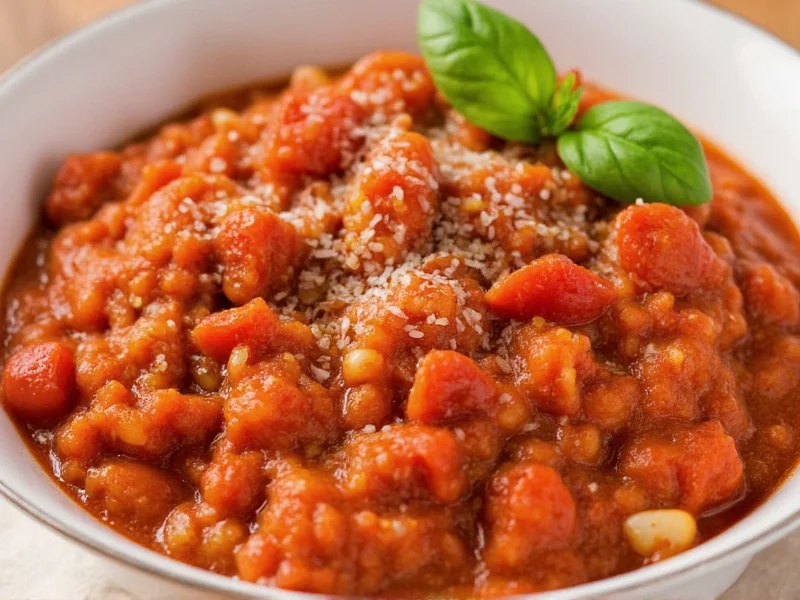Italian cooking uses soffritto (with double 'f'), not sofrito. Sofrito is Spanish/Latin American, while soffritto is Italy's aromatic base of finely diced onion, carrot, and celery sautéed in olive oil. This foundational technique creates depth in pasta sauces, soups, and braises. The authentic ratio is 2:1:1 (onion:carrot:celery), cooked slowly over low heat until translucent but not browned.
Understanding Italy's True Flavor Foundation
Many home cooks search for “sofrito recipe Italian” unaware they’re mixing culinary traditions. The confusion stems from similar names for different techniques. Spanish and Latin American cuisines use “sofrito” (single 'f'), typically containing tomatoes, peppers, and herbs. Italian cooking relies on “soffritto” (double 'f') – a simpler, vegetable-based foundation without tomatoes.
Why Soffritto Matters in Italian Cuisine
Soffritto forms the flavor backbone of countless Italian dishes. When properly prepared, it releases natural sugars and aromatics that transform simple ingredients into complex sauces. Unlike its Spanish counterpart, authentic Italian soffritto never includes garlic, tomatoes, or herbs during the initial sauté phase. These get added later in the cooking process.
The Authentic Soffritto Ratio and Ingredients
Traditional Italian cooking follows a precise vegetable ratio that balances sweetness, earthiness, and aroma:
| Ingredient | Traditional Ratio | Preparation Tip |
|---|---|---|
| Yellow Onion | 2 parts | Fine dice (1/8 inch) |
| Carrot | 1 part | Peel and fine dice |
| Celery | 1 part | Include leaves for extra flavor |
Step-by-Step Traditional Soffritto Recipe
- Prepare vegetables: Finely dice equal parts carrot and celery, plus twice as much onion. Consistent 1/8-inch pieces ensure even cooking.
- Heat olive oil: Use good quality extra virgin olive oil in a heavy-bottomed pan over medium-low heat.
- Sweat vegetables: Add onions first, cooking 2-3 minutes until translucent. Then add carrots and celery.
- Low and slow: Cook 8-12 minutes, stirring occasionally, until vegetables soften but don’t brown. Proper soffritto should be pale gold, not caramelized.
- Season: Add salt to draw out moisture and enhance flavor development.
Common Mistakes That Ruin Authentic Soffritto
- Browning the vegetables: High heat creates caramelization instead of the subtle flavor base Italian cooking requires
- Incorrect ratios: Too much onion overwhelms; insufficient carrot fails to balance acidity in tomato sauces
- Adding garlic too early: Garlic burns quickly and turns bitter if added with the initial vegetables
- Using pre-cut vegetables: Store-bought diced vegetables often have inconsistent sizes that cook unevenly
How to Use Soffritto in Classic Italian Dishes
Soffritto serves as the starting point for many regional specialties:
- Ragù Bolognese: Build meat sauce by browning soffritto before adding ground meats
- Minestrone: Soffritto forms the flavor base before adding broth and vegetables
- Osso Buco: Traditional Milanese preparation begins with soffritto before adding veal shanks
- Pasta sauces: Always start tomato-based sauces with properly prepared soffritto
Advanced Soffritto Techniques
Regional variations enhance specific dishes:
- Northern Italy: Some Lombard recipes include a small amount of butter with the olive oil
- Southern Italy: Occasionally adds a pinch of red pepper flakes for subtle heat
- Make-ahead tip: Freeze portioned soffritto in ice cube trays with olive oil for instant flavor base
- Storage: Refrigerate for up to 5 days or freeze for 3 months in airtight containers
Why This Technique Transforms Your Italian Cooking
Mastering authentic soffritto separates adequate Italian cooking from exceptional. The slow sweating process develops flavor compounds that can’t be replicated with shortcuts. When you’re making a tomato sauce, the natural sweetness from properly cooked carrots balances acidity without needing sugar. The celery adds aromatic complexity that elevates simple dishes into restaurant-quality meals. This foundational technique represents the Italian culinary philosophy of building flavor gradually through careful preparation rather than relying on heavy seasoning.
Frequently Asked Questions
Can I use a food processor for authentic soffritto?
While convenient, food processors often create uneven pieces that cook inconsistently. For authentic results, hand-dice vegetables to 1/8-inch size. The extra effort ensures even sweating and proper flavor development without burning.
Why doesn't traditional Italian soffritto include garlic?
Garlic burns quickly at the low temperatures used for soffritto. In authentic Italian cooking, garlic gets added after the vegetables have softened, typically for just 1-2 minutes before proceeding with the recipe. This preserves its delicate flavor without bitterness.
What's the difference between soffritto and battuto?
Battuto refers to the raw mixture of diced vegetables before cooking, while soffritto describes the cooked version. Many Italian recipes first instruct to prepare the battuto, then cook it to create the soffritto base for the dish.
Can I substitute olive oil in soffritto?
Extra virgin olive oil provides the authentic flavor profile, but you can use mild vegetable oil if preferred. Northern Italian recipes sometimes incorporate butter for specific dishes like risotto, but traditional soffritto for tomato sauces requires olive oil.
How do I know when soffritto is perfectly cooked?
Properly cooked soffritto appears translucent with a pale golden hue, never browned. The vegetables should be very soft but maintain their individual shapes. You'll notice a sweet, aromatic fragrance without any sharp onion smell. This typically takes 8-12 minutes over medium-low heat.











 浙公网安备
33010002000092号
浙公网安备
33010002000092号 浙B2-20120091-4
浙B2-20120091-4